June 29, 2016
Today was a very emotionally draining day, which is why I’m struggling to write today’s post. We visited the Choeung Ek Genocidal Center (aka “killing fields”) and the Tuol Sleng Genocide Museum – which made for a very somber Phnom Penh day.
Our morning started quite late. We had a really good breakfast at the hotel and then got ready to head out. We found a tuk tuk outside the hotel and negotiated a fare to take us to the killing fields and then to the museum afterwards. Our tuk tuk driver was an older man who agreed to take us around for $15 USD. It started to lightly rain as we made our way to the killing fields, which seemed appropriate for what we were about to see.
Choeung Ek is located about 45 minutes outside of Phnom Penh. The tuk tuk ride there was an adventure in itself and I quite enjoyed riding in one through the crazy Cambodian streets.
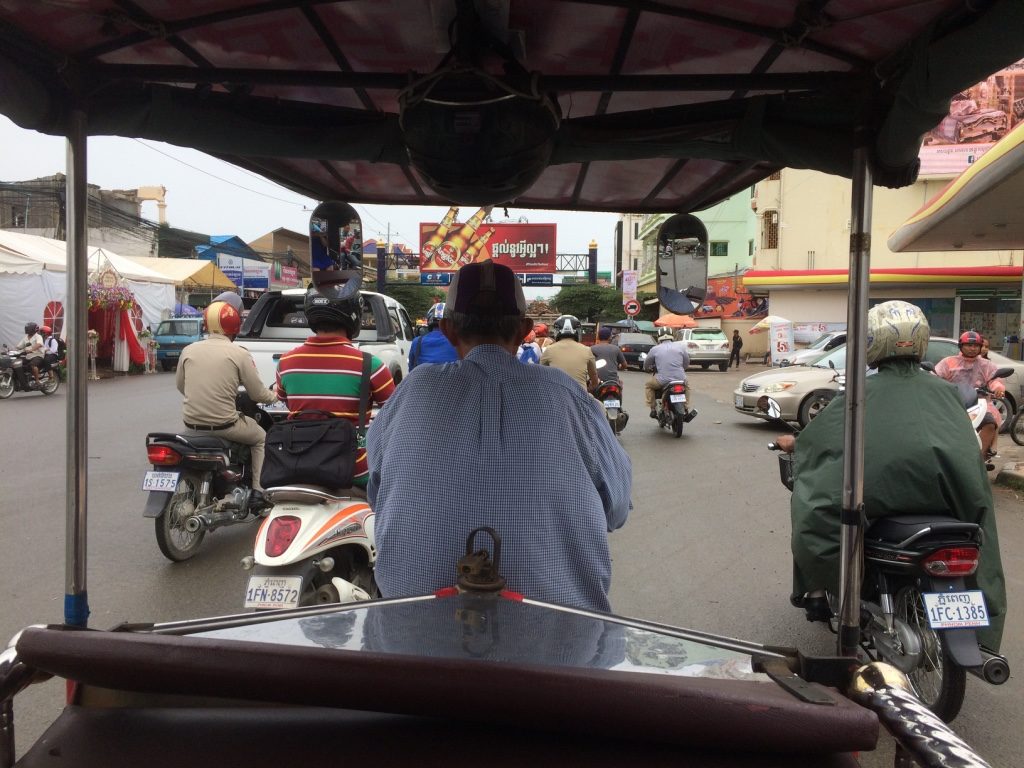

Once we arrived at Choeung Ek, we agreed to meet our driver in 2 hours. Admission to the grounds, which includes a really good audio guide, was $6 USD each. The audio guide leads you around the killing fields and then to the memorial stupa at the end. As this is now a memorial sight, it was peaceful and quiet while everyone walked around and listened to their headsets and reflected on what we just heard. It’s hard to imagine that 35 years ago, the very area we were walking on was the site of mass graves and horrific atrocities.
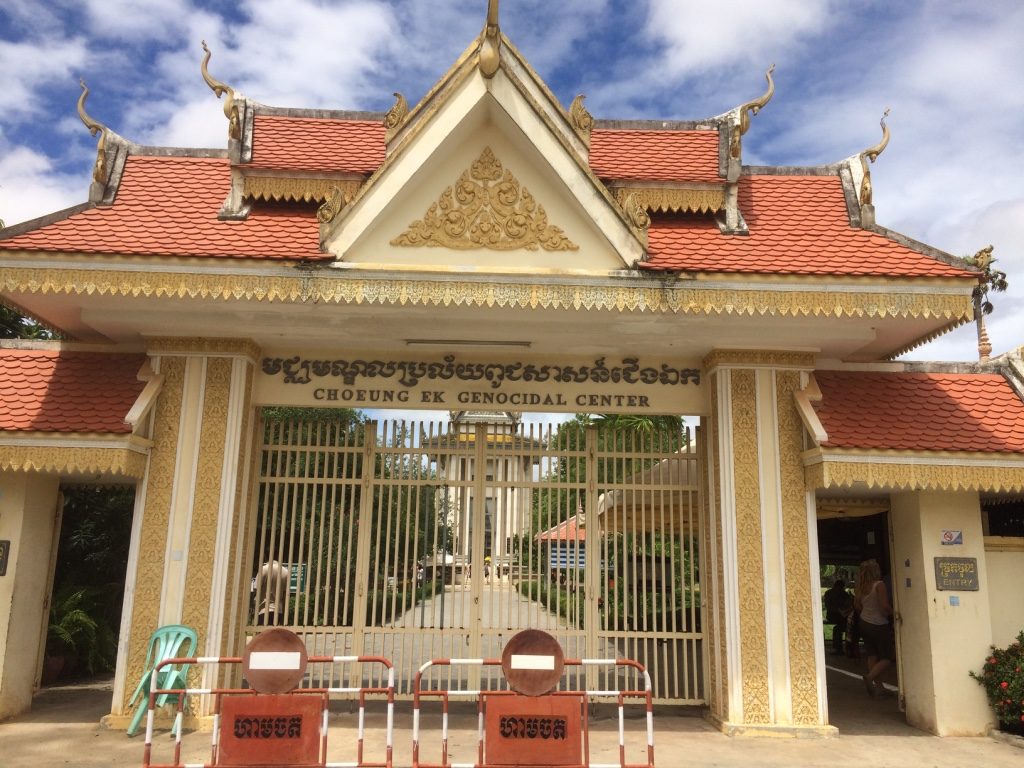

While walking through the grounds, you couldn’t help but get emotional hearing what happened during Khmer Rouge’s reign of terror. Tim will be better at explaining what we saw.
(Tim: Taking over for the rest of this post)
The killing fields were previously a Chinese Cemetery before the Khmer Rouge began using it as a execution site. Prisoners from Security Prison 21 (S-21) were brought to the killing fields for execution after signing confessions that were tortured out of them. S-21 would be our next stop after the killing fields, as the former prison was now the Genocide Museum.
The Khmer Rouge, led by Pol Pot, tried to create a closed off, agrarian socialist society. Pol Pot glorified the farmer, and soon after the Khmer Rouge took Phnom Penh and began their regime, they evacuated cities and made everyone move into the rural areas to work on farms (as slave labour basically). Anyone that posed a potential threat to the regime was imprisoned and executed… Anyone educated, anyone in a profession, religious leaders, anyone with glasses even (meant you were educated?), were subject to imprisonment and execution.
(Kait: The following pictures may be disturbing but I also think it’s important to see them.)
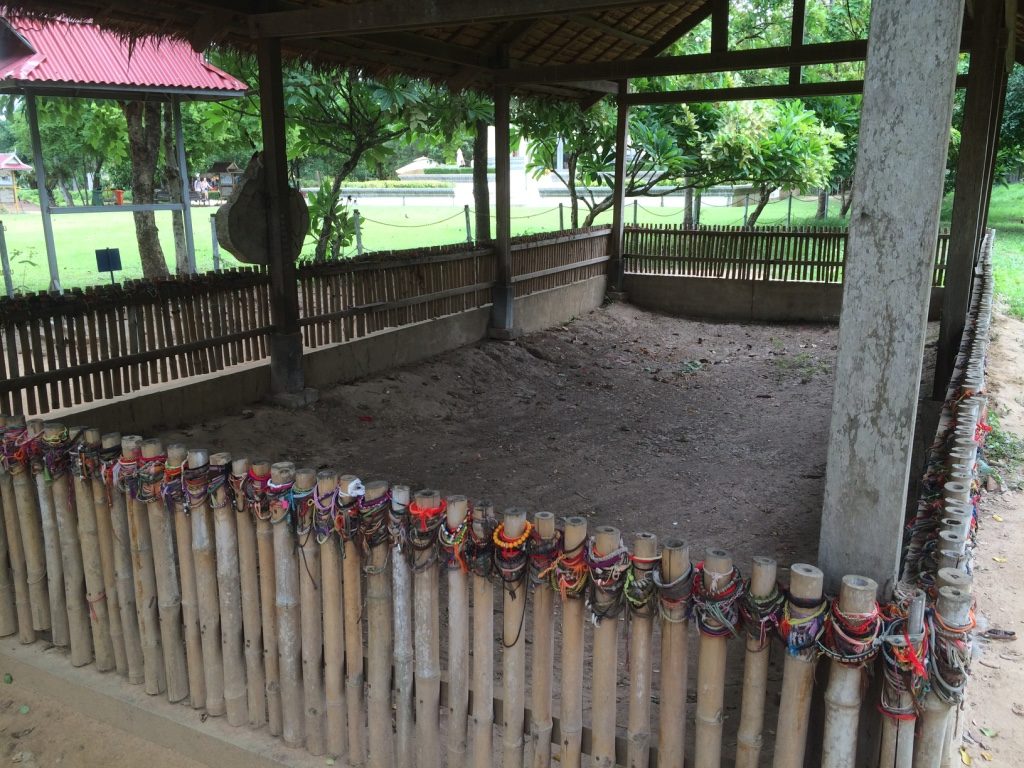




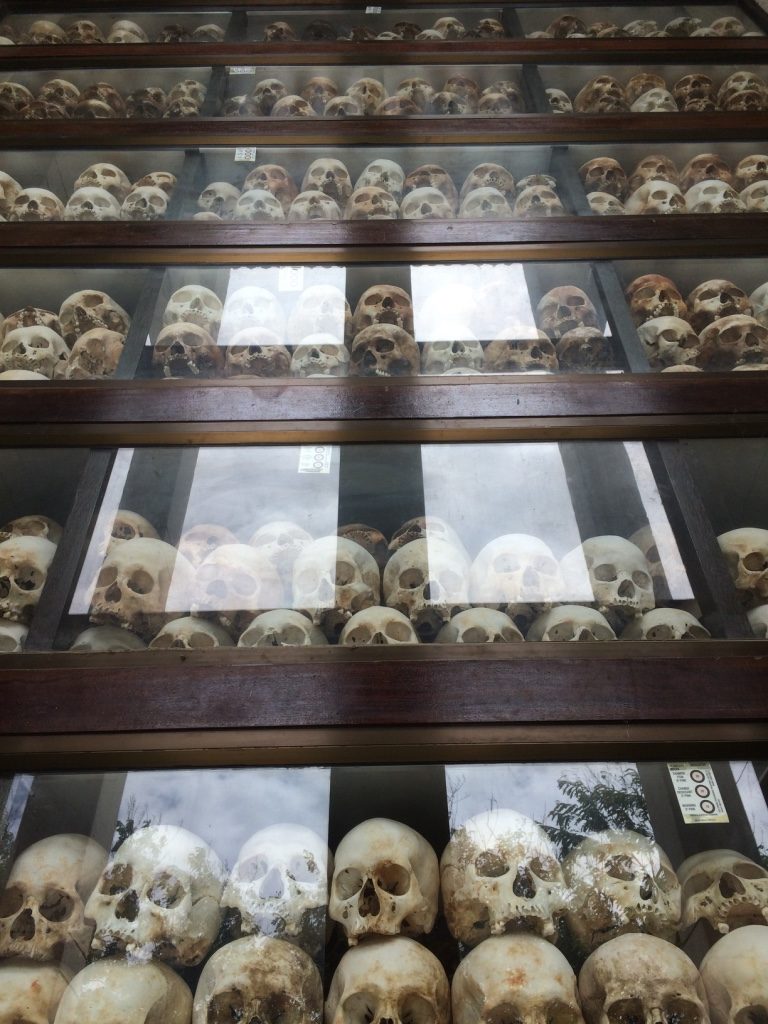
After spending a somber couple hours at the killing fields, we found our tuk tuk driver and were on our way back into town to the Genocide Museum.
Before going in, we took a short break to go find something for lunch. We started making our way down the street adjacent to the museum and saw a street food spot with an awning that had a picture of Luc lac beef. That was easy. Kait and I shared a Luc lac beef and a noodle soup. We also got a fruit smoothie (can’t go wrong). After lunch, we made our way to the museum.
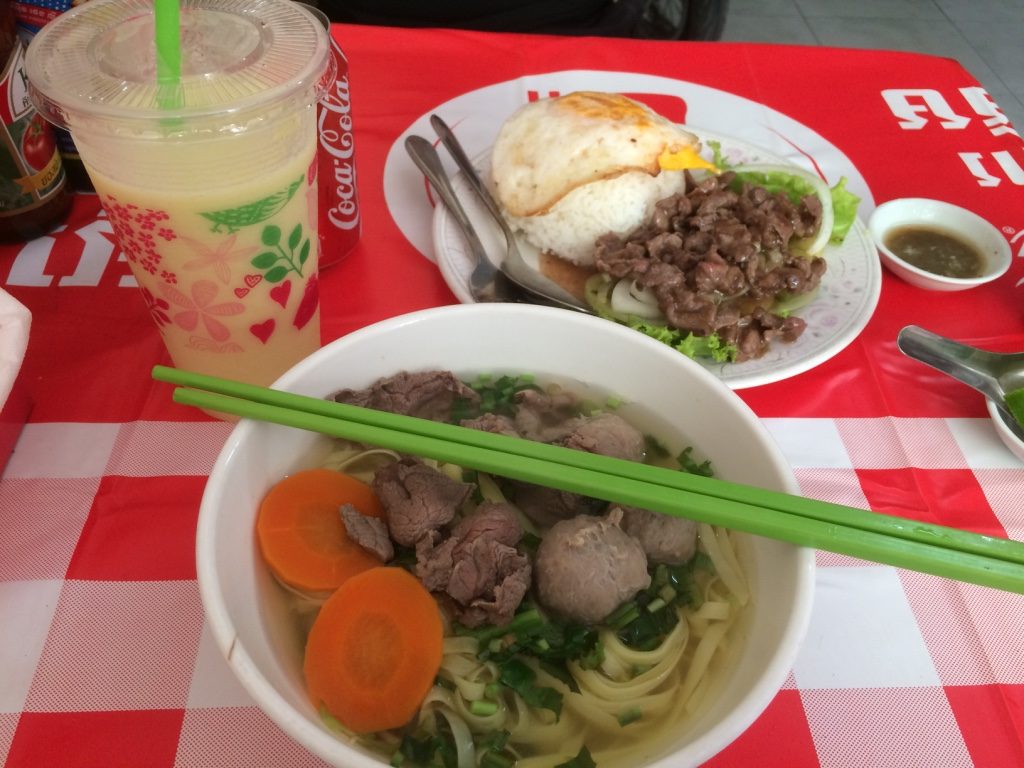
Tuol Sleng Genocide Museum, S-21 during the Khmer Rouge regime, and a high school before that, was converted into a museum and memorial after the Khmer Rouge regime fell to the Vietnamese. Of the 20,000 or so prisoners that entered the prison, only 7 survived. (Tim: Apparently 7 is the most often quoted number but more recent studies show the number was probably closer to 20-30).

Walking around the museum, I was disturbed by the many similarities I noticed between what they did here, and what I saw at the Auschwitz Concentration Camp. Different countries, different ideologies, different contexts, but similar tragedies. Both took photos and extensive documentation of the prisoners. Both have stories of orders being given to destroy all the photos and documentation when liberators neared the sites, only to have the soldiers their evacuate before they had time to destroy all the evidence. Both had policies of transferring prisoners to the execution sites under false pretenses. Both were disturbingly efficient about killing people. Both started at a certain pace of execution, which dramatically (and tragically) increased near the fall of their regimes. Both had soldiers who said they were only following orders…
I find the extensive documentation particularly disturbing and odd, but a clip from the Audio Tour gave an explanation that I found somewhat plausible. By requiring and strictly adhering to rules that required detailed documentation, they took the act of genocide and mass murder, and made it procedural. It became something easier for a soldier to follow through on. They’re just following detailed instructions…
Both Auschwitz and S-21 had rooms filled with portrait photos of hundreds of prisoners. I found the portraits particularly moving. It’s haunting to see so many beautiful faces, young and old, male and female, knowing they were all imprisoned here, tortured, then executed. But I find it important to pay my respects and give them my attention.
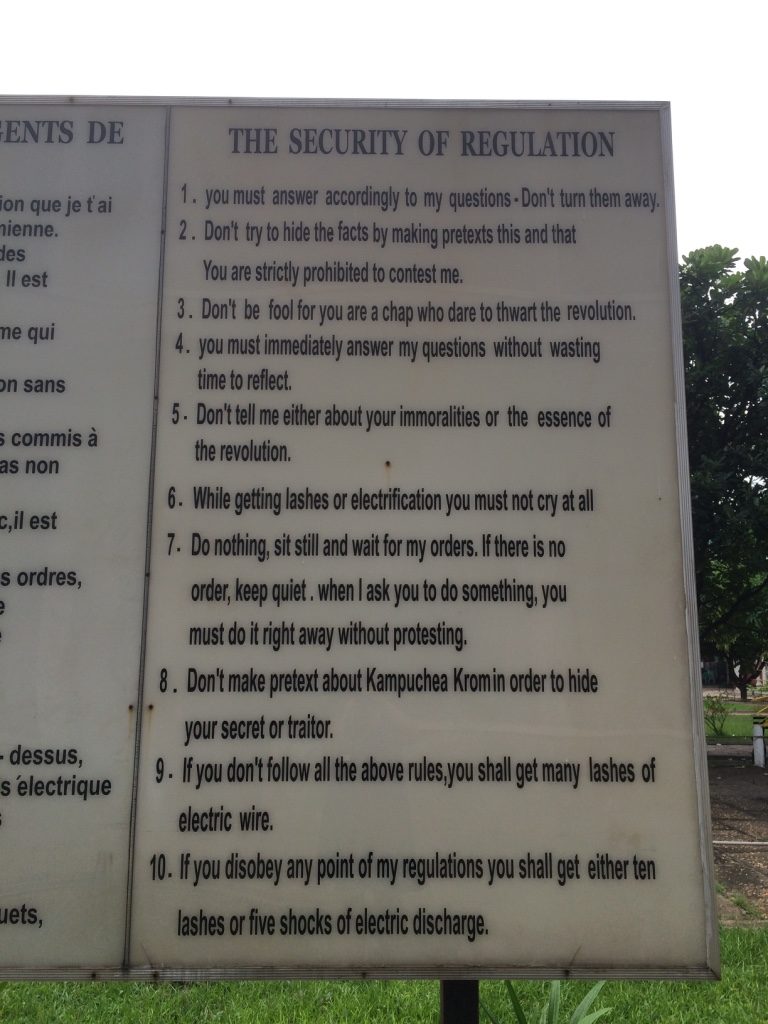



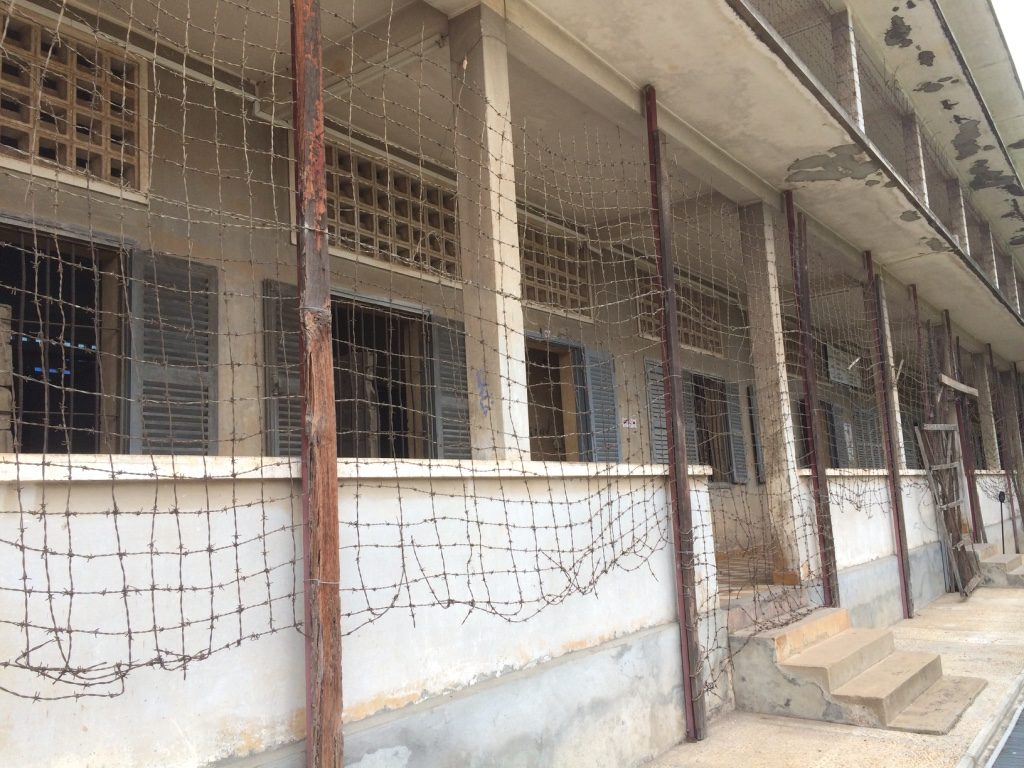
While there isn’t conclusive evidence on the total number of people who died, estimates put it at 1.5-3 million people, with the best estimates putting it around 2 million people, or 1/4 of the entire Cambodian population at that time. It’s fascinating to me to see how countries come out of tragedies like this… Even as an outside observer (i.e. tourist), knowing the history is so recent, it’s almost too much for me to process. And yet, the people in Cambodia seem very forward looking and optimistic. I imagine the country has changed a lot in the last 20 years, and will continue to change. It makes me interested in revisiting the country in the future.
(Kait: Putting the pictures into this post and recounting what we saw yesterday still brings up a lot of emotions. Throughout the museum there were testimonials from many women who were forced to marry men under the Khmer Rouge regime. If they didn’t comply and reproduce they were both killed. Their stories were all very similar – they were all forced into loveless and abusive marriages. Looking at the ages of the women, they were all our parent’s age. It made me really sad and also very appreciative of our lives. All the victims who died under Khmer Rouge were extremely unlucky to be born during a horrific time and place. They suffered under no fault of their own and that’s what is really upsetting.)
After our somber afternoon, we made our way to Mok Mony, a restaurant recommended to us by Kait’s cousin, Chloe. Looking over the menu, we went with another Luc Lac beef and a marinated beef dish. For dessert, we got Mango Sticky Rice which was one of our favourite dishes in Thailand.
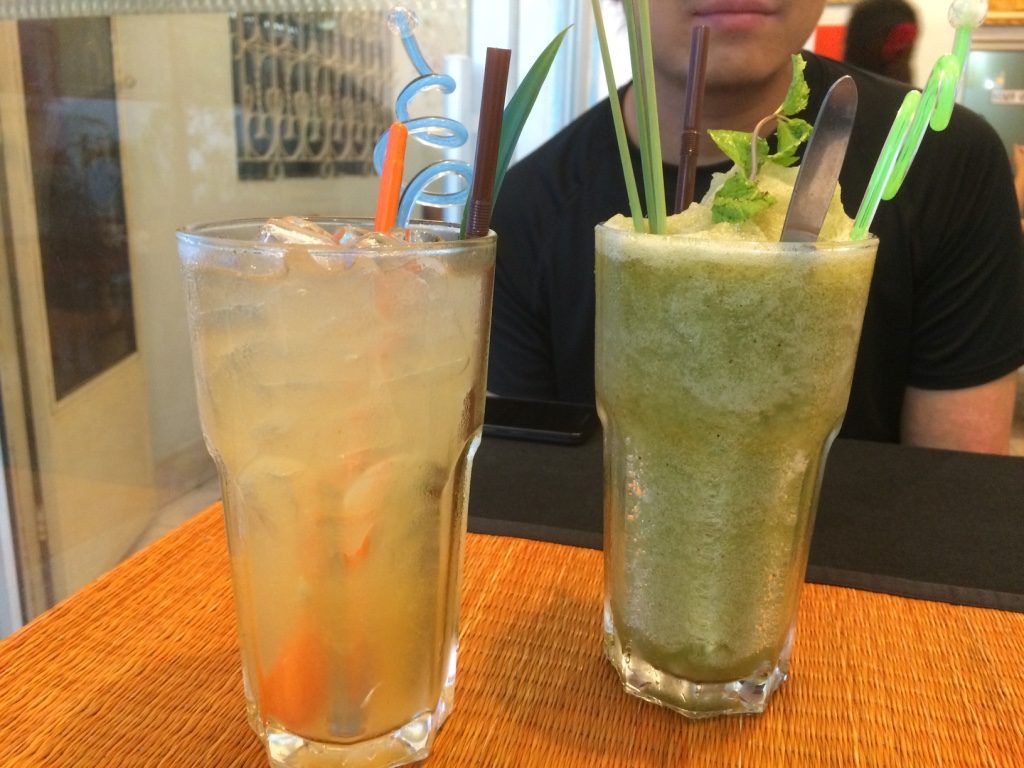


It was a long day, but I’m really glad we had a chance to visit the killing fields and the genocide museum. We learned a lot of about the recent history of Cambodia, and I think it helps to put a lot of things in context for us about the country. I’m looking forward to seeing more of Cambodia.
Steps Today: 11,000

